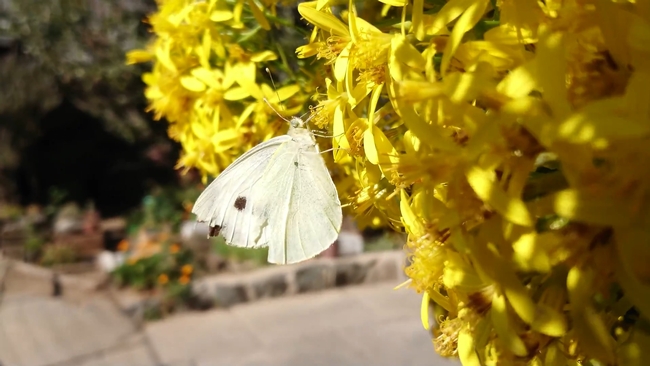
Cabbageworm larvae are green and very hairy, with a velvet-like appearance. Adults are white moths with one to four black spots on their wings. They lay eggs individually on the leaves of brassica plants and, after hatching, the caterpillars eat the leaves and cabbage heads.
Check brassica leaves in your garden for tiny yellowish white cabbageworm eggs and squish them. If you see the green caterpillers, pick them off the plant and squish them too. If the number of caterpillars is too difficult to manage by hand, organic pesticides such as Bacillus thuringiensis and spinosad are very effective. Natural enemies, such as tachinid flies, will also help control cabbageworms.
You can prevent cabbageworm butterflies from laying eggs on your vegetables in the first place by covering plants with a floating row cover or insect netting. A floating row cover is a lightweight, usually white permeable fabric available at home centers or online.
To learn more about cabbageworms, visit the UC Integrated Pest Management Program website.
Attached Images:
